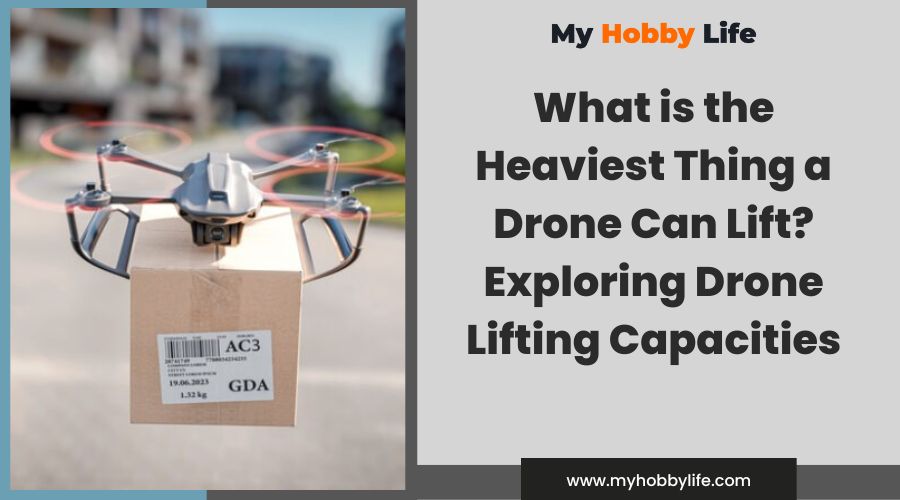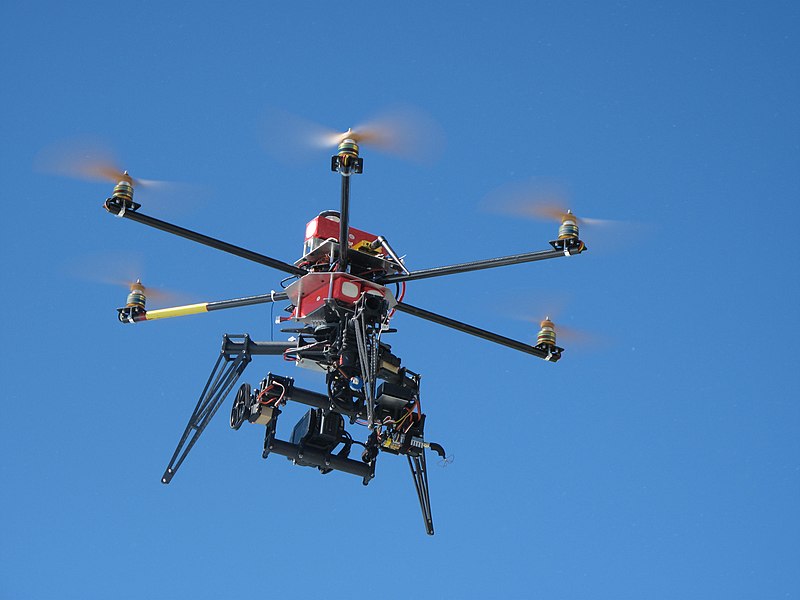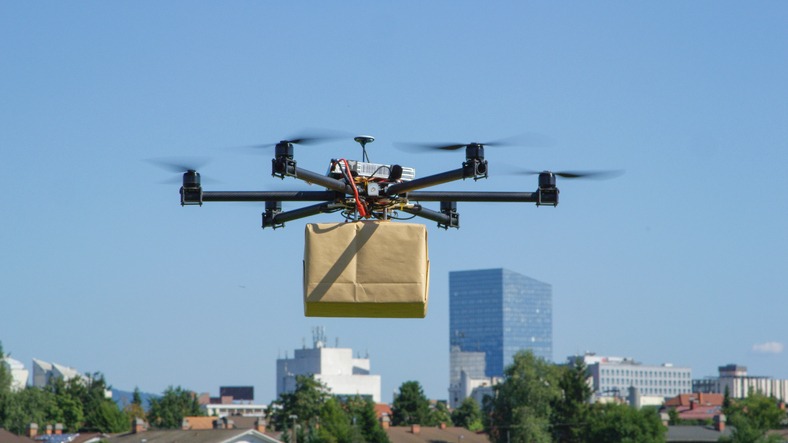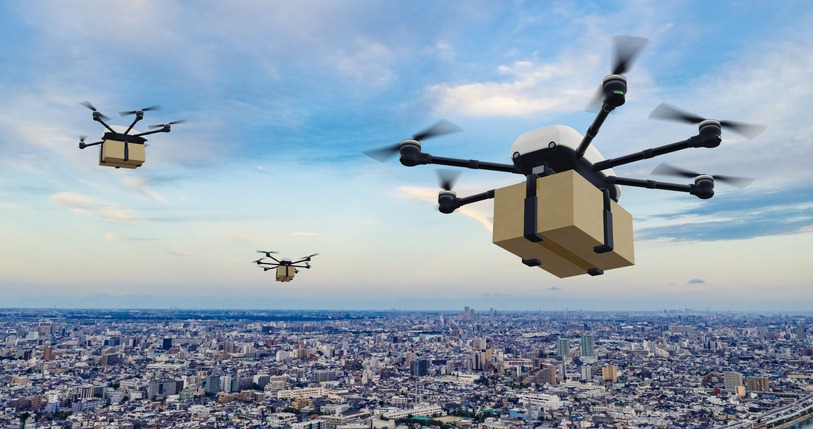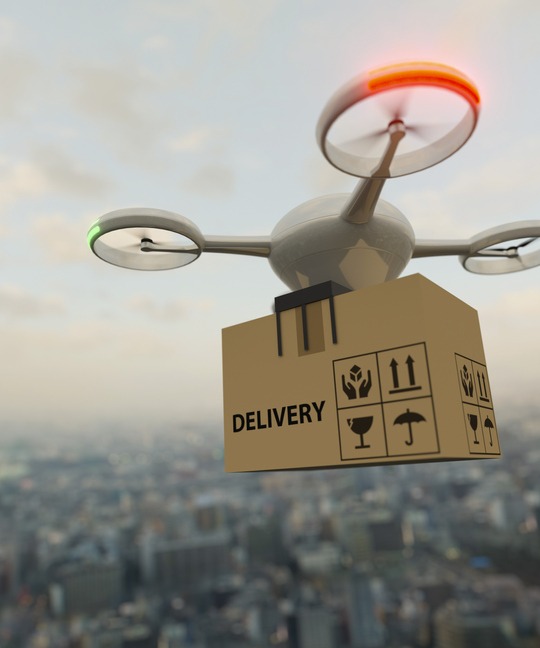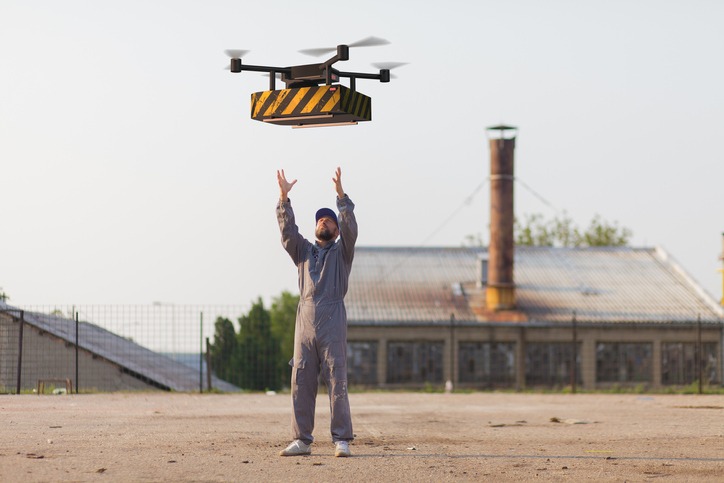The capabilities of drones, or Unmanned Aerial Vehicles (UAVs), have evolved remarkably, expanding far beyond hobbyist activities to professional applications that necessitate strength and steadiness. One important attribute that defines a drone’s utility is its payload capacity, which is the weight a drone can carry. This capacity varies widely among different models, but typically, consumer drones can handle a few pounds while specialized heavy-lift drones are designed to carry more substantial loads.
Commercial and industrial applications have driven the development of drones that can carry heavier items, with some able to lift payloads weighing 500 pounds or more. These drones are not just limited to camera gear but have expanded their reach to transport supplies, aid in search and rescue missions, and even carry people in specific scenarios. The lift capacity hinges on the drone’s design, including factors such as the number of propellers, the power of motors, and overall structural integrity.
Discussions about the heaviest things a drone can lift often involve trade-offs between the drone’s weight, battery life, and the efficiency of its design. Industry professionals continuously work on enhancing these factors to extend a drone’s lifting capabilities while ensuring safe and reliable operation across various industries.
Understanding Drone Capabilities
When evaluating the lifting capabilities of drones, it’s essential to understand the various types of UAVs, their design intricacies, and the role that each component plays in achieving the optimal lift capacity. This section provides insights into the operational range and limits concerning how much weight drones can carry.
Types of Drones
There are several categories of drones characterized by their design and intended use. Quadcopters, with four propellers, are commonly used for photography and recreational purposes. In contrast, octocopters and hexacopters provide more lifting power and stability, making them suitable for carrying larger payloads. Heavy lifting drones are specially designed to transport substantial weights and are often utilized in commercial operations.
Key Components Influencing Lift
The motors and propellers are two crucial components that impact a drone’s lifting capacity. Powerful brushless motors coupled with efficiently designed propellers dictate the thrust a drone can produce. Motor redundancy is critical in some models to ensure flight stability and safety in case one motor fails.
Measuring Lift Capacity
Lift capacity is commonly measured in kilograms or pounds and refers to the maximum payload weight a drone can carry. It should be distinguished from maximum takeoff weight, which includes the weight of the drone itself.
Drone Size and Lift Relationship
Generally, larger drones have a higher lifting capacity. It is a balance between the size of the drone and the weight it needs to lift, where both need to be optimized for efficient lifting.
Motor and Propeller Impact on Lift
The combination of the motor’s power and the size and pitch of the propellers directly affects the amount of lift a drone can generate. Higher-powered motors and larger propellers can increase a drone’s lifting ability.
Stability and Lift Efficiency
The implementation of stabilization systems such as a gimbal and the use of GPS technology contribute to a drone’s ability to maintain lift efficiency while ensuring smooth flight dynamics.
Battery Life and Payload Trade-off
There is an inverse relationship between payload weight and flight time—as the weight of a payload increases, the battery life decreases. Operators often need to find a balance between payload capacity and battery life to achieve mission objectives.
The Role of UAV Design and Materials
UAV construction materials, such as carbon fiber, may enhance lifting capability by reducing the drone’s own weight, thereby allowing more capacity for payload. The design parameters also play a crucial role in optimizing a drone’s shape for lift efficiency.
Safety and Regulation Compliance
Operators of heavy-lifting drones are required to be FAA certified heavy lift drone pilots in the United States. Safety compliances, such as those set by the Norwegian Civil Aviation Authority and European UAS safety regulations, ensure that UAV operations do not comprise public safety.
The performance and capabilities of drones are largely influenced by their engineering, components, and design. Operators must comply with safety regulations to deploy heavy-lifting drones effectively in various fields.
Leading Models and Payload Capacities
In the realm of drone capabilities, payload capacity is a key performance metric that distinguishes various models. This section explores some of the foremost drones across different categories, focusing on their maximum payload capacities.
Consumer Drones and Payloads
Consumer drones, such as the DJI Phantom 4, offer a balance between lift capacity and user-friendliness. They typically have a payload capacity up to 3 pounds which suits recreational and light commercial use.
Commercial and Professional Drones
Commercial and professional drones like the DJI Matrice 600 Pro and Yuneec Tornado H920 are designed for more demanding applications, supporting payload capacities of approximately 13 pounds and 3.5 pounds respectively. These UAVs cater to industries like filmmaking and agriculture.
Specialized Heavy-Lift Drones
The Griff 300 and similar heavy-lift drones are engineered to transport substantial loads, boasting capacities that exceed 500 pounds. Such UAVs are instrumental in industrial, military, and specialized commercial tasks.
Comparative Overview
A comparative analysis of payload capacities is essential for potential drone operators. For instance:
- DJI Phantom 4: ~0.66 pounds
- DJI Matrice 600 Pro: 13 pounds
- Yuneec Tornado H920: 3.5 pounds
- Griff 300: Above 500 pounds
Innovative Heavy-Lifting Models
Innovations in heavy-lifting drone technology have led to the creation of models like the Freefly Alta X and the Vulcan UAV Black Widow, which are pushing the boundaries of aerial lift capacities. The Freefly Alta X, for example, can carry up to 35 pounds.
Drone Category Leaders
Within their respective categories, drones such as the DJI Matrice 600 Pro for professional use, the Freefly Systems Alta 8 Pro for cinematography, and the DJI Agras MG-1 for agriculture, lead the way in terms of payload capacity and specialized utility.
Applications of Heavy-Lift Drones
Heavy-lift drones, with their significant payload capacity, are transforming various industries by performing tasks that were once challenging or impossible. These drones are not only about lifting capabilities but also about precision, efficiency, and tackling high-risk scenarios.
Industrial Operations
Heavy-lift drones such as the DJI Matrice 300 RTK are utilized in industrial settings for inspection and construction tasks. These UAVs (Unmanned Aerial Vehicles) carry specialized equipment for surveying large structures, enabling detailed inspections without the need for scaffolding or aerial work platforms. Their payload capacity allows them to carry sensors and cameras for critical infrastructure monitoring.
Emergency Services and Rescue
In emergency response situations, including search and rescue, heavy-lift drones like the Freefly ALTA 8 Pro play a pivotal role. They can maneuver through dangerous environments to locate victims, deliver emergency supplies, or provide live aerial footage to command centers. For firefighting, drones can transport fire extinguishers or hoses to inaccessible areas, enhancing the efficiency of the emergency services.
Cinematography and Filming
The cinematography industry relies on drones such as the Vulcan UAV Black Widow to capture high-quality aerial footage. These UAVs carry heavy camera rigs for filming movies, commercials, and television productions. The stability and lifting power of these drones provide filmmakers with a tool for creating the perfect shot from the sky.
Agriculture and Crop Management
Drones like the DJI Agras MG-1 are revolutionizing agriculture. They have the ability to carry large volumes of liquids for crop spraying, improving the distribution efficiency and minimizing human exposure to chemicals. In crop management, drones are used for the distribution of seeds and nutrients, making precision agriculture more accessible.
Transportation and Delivery
Transportation and delivery services are experimenting with drones capable of carrying substantial weight for drone delivery systems. In the near future, postal delivery and the transportation of goods over short distances may become a common sight, as drones efficiently move payloads from one location to another.
Military and Surveillance Uses
In the military sector, heavy-lift drones are employed for their surveillance capabilities. They can carry advanced imaging devices for reconnaissance missions or transport supplies to troops in the field. These drones increase the safety and effectiveness of military operations by reducing the need for personnel in hostile environments.
Heavy-lift drones have broad applications and are expected to see increased usage across countless industries, thanks to their ability to carry significant payloads and perform complex tasks with precision and efficiency.
Factors to Consider When Choosing a Drone
Selecting a drone capable of lifting heavy items requires a careful evaluation of several critical factors. Specificity in understanding these elements ensures optimal drone performance for intended tasks.
Determining Your Payload Requirements
The payload capacity is a decisive factor that directly impacts a drone’s ability to perform the designated tasks. High payload drones are engineered to carry substantial weight but understanding the maximum payload capacity is pivotal. For instance, if the requirement is to lift camera equipment for cinematography, the drone must accommodate this weight plus any additional stabilizing gear.
Budget Considerations
The cost of a drone increases in correlation with its capacity to carry heavier payloads. Prospective buyers should compare heavy payload drone prices against their lifting requirements and expected returns on investment. Commercial drones with high payload capabilities often have a higher price, reflecting their advanced technology and construction materials.
Flight Time and Distance Requirements
Efficient operations necessitate drones that align with the required flight time and range. Battery life often dictates the flight time, while the technology determines the operational range. Longer flying times are essential for tasks such as surveying or drone delivery systems (DDS), but they may incur additional costs.
Intended Use and Application
Drones serve myriad applications from inspection to cinematography and surveying. Determining the specific application defines the drone’s required features, such as stabilized gimbals for video or precision sensors for survey work. Commercial operations might necessitate different UAVs than those used for non-commercial purposes.
Regulatory Compliance and Training
It is mandatory for operators to adhere to UAS safety regulations. Drones lifting heavy items may require the pilot to obtain FAA certified heavy lift drone pilot status. Knowledge of such regulations and the cost of training should be considered when calculating the overall investment in a drone operation.
Frequently Asked Questions
Heavy lift drones vary widely in their payload capacities, designed to meet specific industrial and commercial requirements. This section answers common queries related to the weight lifting capabilities of such drones.
What is the maximum payload capacity of heavy lift drones?
Heavy lift drones are designed to carry different payloads, with the largest ones capable of lifting up to several hundred kilograms.
Which heavy lift drone offers the highest weight lifting ability?
As of 2024, the drone known for offering the highest weight lifting ability is a specialized model designed for industrial applications, often custom-built to suit specific tasks.
What is the typical weight limit for industrial-grade heavy lift drones?
Industrial-grade heavy lift drones typically have a weight limit that ranges from 20 to 220 kilograms or more, depending on their design and purpose.
How much can the GRIFF Aviation 300 drone lift?
The GRIFF Aviation 300 drone is designed to lift up to 300 kilograms, making it one of the powerful drones in the heavy lift category.
What are the capabilities of DJI’s heavy lift drones?
DJI’s heavy lift drones are engineered for professional use, with models capable of lifting significant weights, often exceeding 10-15 kilograms, and are utilized for industrial and filmmaking purposes.
Can commercial drones lift more than 100 kilograms?
Yes, some commercial drones are capable of lifting more than 100 kilograms, designed to cater to industrial and special operational needs requiring heavy payload capacities.
